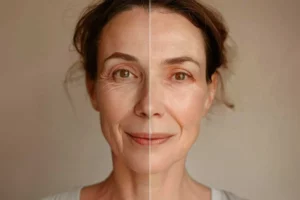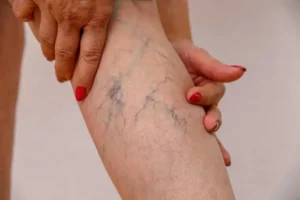Introduction
What is Laser Hair Removal?
Laser hair removal is a non-invasive cosmetic procedure that targets and destroys hair follicles using a concentrated light beam. The laser emanates a specific wavelength of light engrossed by the pigment in the hair follicle, heating it and damaging it to prevent future hair growth.
The process involves several treatments, typically spaced several weeks apart, to ensure that all hair in the targeted area is treated during its active growth phase. It is a popular option for traditional hair removals such as shaving, waxing, and plucking because it provides longer-lasting results and often leads to permanent hair reduction.
It is a safe, effective, and long-lasting solution for removing hair on various body parts, including the face, arms, legs, and bikini. In this article, we’ll discuss laser hair removal and the importance of understanding how it works to remove hair permanently.
Importance of Understanding How Laser Hair Removal Works
Understanding how laser hair removal works are essential for several reasons. Firstly, it helps individuals set realistic expectations for the treatment. It’s crucial to know that laser hair removal is not a one-time solution for permanent hair removal. Numerous treatments are required to achieve the desired results, and maintenance therapy may be necessary to maintain hair-free results.
Secondly, understanding how laser hair removal works helps individuals select a reputable provider who uses the correct equipment and settings for the treatment. Laser hair removal should be done by a professional, experienced provider using FDA-approved equipment to ensure safe and effective treatment.
Finally, understanding how laser hair removal works can help individuals properly care for their skin before and after the treatment. For example, avoiding sun exposure and certain skincare products before and after laser hair removal is essential to prevent skin damage and achieve the best results.
The Science Behind Laser Hair Removal
Laser hair removal targets hair follicles using a concentrated beam of light. This process relies on the principle of selective photothermolysis, which means that the laser’s energy is absorbed by the hair follicle’s melanin (pigment) and converted into heat. The heat damages the follicle, preventing it from producing hair in the future.
How Lasers Target Hair Follicles
It targets the melanin in the hair follicle, so laser hair removal is most effective on darker, coarser hair. The hair’s pigment absorbs the laser’s energy, causing the hair to heat up and damage the follicle’s stem cells, which are responsible for hair growth. The damaged strand will no longer be able to produce hair, leading to permanent hair reduction.
Differences Between Laser and Other Hair Removal Methods
Laser hair removal differs from other hair removal methods like shaving, waxing, and electrolysis. Shaving and waxing only remove the hair shaft, leaving the follicle intact, which means that hair will grow back quickly. Electrolysis uses a small electric current to destroy each hair follicle, making it more time-consuming. Laser hair removal, on the other hand, targets multiple hair follicles simultaneously, making it a quicker and more efficient method for hair reduction.
Factors That Affect Laser Hair Removal Effectiveness
Several factors can affect laser hair removal effectiveness, including hair color and thickness, skin color, and the laser’s wavelength and energy settings. Removal of hair through laser is most effective on dark, coarse hair because the melanin in the hair absorbs more of the laser’s energy. Individuals with lighter hair may see different results. Skin color is also an essential factor, as the laser targets melanin. Individuals with darker skin tones are at higher risk for skin damage because the laser can also target the melanin in their skin.
The laser’s wavelength and energy settings can also affect effectiveness. The correct wavelength and energy settings are necessary to target the hair follicle without damaging the surrounding skin. The provider’s experience and training in laser equipment are also crucial to ensure safe and effective treatment.
The Laser Hair Removal Process
Laser hair removal involves several steps that ensure safe and effective treatment. Here’s what to expect during the laser hair removal process.
Step-by-Step Procedure
- Consultation: Before the treatment, the provider will assess your skin and hair type and recommend the best laser settings for your treatment.
- Preparation: The provider will shave the treatment area to ensure the laser can penetrate the hair follicle without damaging the skin.
- Laser Treatment: The provider will use a handheld laser device to target the hair follicles, emitting light pulses that heat and damage the bristles.
- Cooling: The provider may use a cooling device or gel in the treatment area to minimize discomfort and protect the skin.
- Post-Treatment: The provider will provide post-treatment care instructions, including avoiding sun exposure, using a soothing cream, and avoiding certain skincare products.
What to Expect During Treatment
During the laser hair removal treatment, individuals may experience mild discomfort, which feels like a snapping or stinging sensation. However, the cooling device or gel can help minimize pain. The treatment time varies depending on the size of the treatment area, but most sessions take between 15 minutes to an hour.
Post-Treatment Instructions
After the treatment, individuals may experience redness, swelling, and mild discomfort in the treatment area. The provider will provide post-treatment care instructions to minimize the risk of side effects and promote healing. These instructions may include avoiding sun exposure, avoiding certain skincare products, and using a soothing cream.
It’s essential to follow these instructions carefully to ensure the best results and reduce the risk of side effects.
Achieving Permanent Hair Reduction through Laser Hair Removal
While laser hair removal can considerably reduce hair growth, achieving hairlessness requires multiple treatment sessions. Here’s why multiple sessions are necessary and what to expect regarding long-term results.
Why are multiple sessions necessary?
Hair grows in different stages, and hair removal through laser only targets hair in the active growth stage. Since not all coats are simultaneously in the active growth stage, multiple treatment sessions are necessary to target all hairs effectively.
The number of treatment sessions required depends on several factors, including the individual’s skin and hair type, the size of the treatment area, and the desired results. On average, most individuals require between 4 to 6 sessions to achieve significant hair reduction.
Long-Term Results of Laser Hair Removal
While laser hair removal does not provide permanent hair removal, it can provide long-term hair reduction. After completing multiple treatment sessions, individuals can expect a significant decrease in hair growth in the treated area.
The length of time between maintenance sessions varies depending on some factors, including the individual’s hair growth rate, skin and hair type, and the treated area’s location. Most individuals require maintenance sessions every 6 to 12 months to maintain the results.
Who is a Good Candidate for Laser Hair Removal?
Laser hair removal can be an effective hair reduction treatment for many individuals. However, only some are good candidates for the regimen. Factors to consider when determining if laser hair removal suits you.
Skin and Hair Type Considerations
Laser hair removal aims at the melanin in the hair follicle, making it most effective for individuals with dark, coarse hair and light skin. Individuals with more golden hair or darker skin may not be suitable candidates for laser hair removal as the laser may only effectively target the hair follicle after damaging the surrounding skin.
Health and Medical Factors to Consider
Before you undergo laser hair removal, it’s essential to consider any health or medical factors affecting the treatment’s safety and effectiveness. For example, individuals with a history of skin conditions, such as eczema or psoriasis, may experience skin irritation or inflammation after treatment. Additionally, certain medications, such as antibiotics or blood thinners, may increase the risk of side effects and complications during the treatment.
Other Important Considerations Before Undergoing Treatment
Aside from skin and hair type considerations and health and medical factors, several other vital reviews should be considered before laser hair removal. These include:
- We avoid sun exposure and tanning beds before treatment to reduce the risk of skin damage and hyperpigmentation risk.
- Staying hydrated and moisturizing the skin before and after treatment promotes healing and reduces the risk of skin irritation.
- Shaving the treatment area before treatment and avoiding other hair removal methods, such as waxing or plucking, can disrupt the hair growth cycle and reduce effectiveness.
- Choosing a licensed and experienced professional who uses FDA-approved equipment to ensure the safety and effectiveness of the treatment.
Conclusion
Laser hair removal is a popular hair reduction treatment that offers numerous benefits, including long-term hair reduction, improved skin texture, and reduced risk of ingrown hairs. However, it’s essential to consider several factors before deciding if laser hair removal is suitable for you.
To recap, laser hair removal targets the melanin in the hair follicle with a high-intensity laser beam, inhibiting hair growth. Multiple treatment sessions are necessary to target all hairs effectively, and maintenance sessions may be required to maintain the results.
Before undergoing laser hair removal, it’s crucial to consult with a licensed professional to assess your skin and hair type, medical history, and other important considerations. By working with a qualified professional and taking the necessary precautions, individuals can achieve the best results and reduce the risk of side effects and complications.
In conclusion, laser hair removal can be an effective hair reduction treatment for many individuals, but it’s vital to approach it with caution and consideration. By seeking professional consultation, following pre- and post-treatment instructions, and choosing a licensed and experienced professional, individuals can enjoy the benefits of laser hair removal and achieve smooth, hair-free skin.
Are you tired of frequently shaving, waxing, or plucking unwanted hair? Laser hair removal might be the solution you’ve been looking for! Visit SKYNN MD now!
Everything you want to know about laser hair removal, how to prepare for treatment, the step-by-step process, and more.
Discover the benefits of laser hair removal, including long-term hair reduction, improved skin texture, and reduced risk of ingrown hairs. Learn who is a good candidate for the treatment and what factors to consider before undergoing treatment.
Visit SKYNN MD for consultation before deciding if laser hair removal is proper. Do not let unwanted hair keep you from feeling confident and comfy in your skin. Discover if this hair reduction treatment is appropriate for you!











